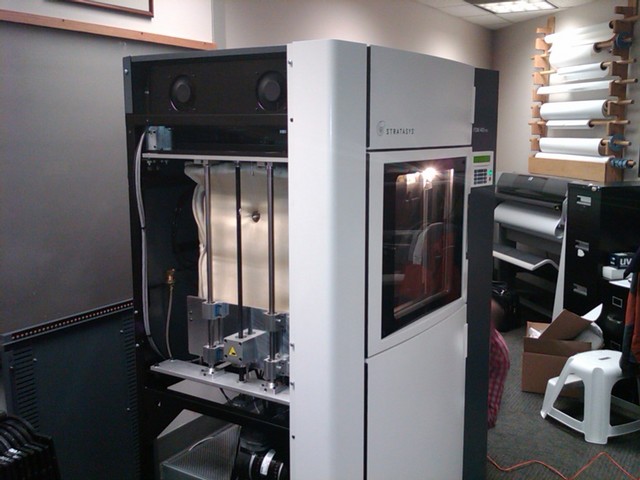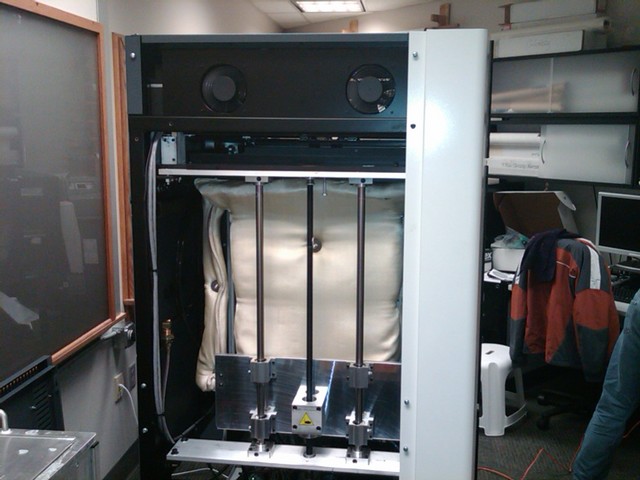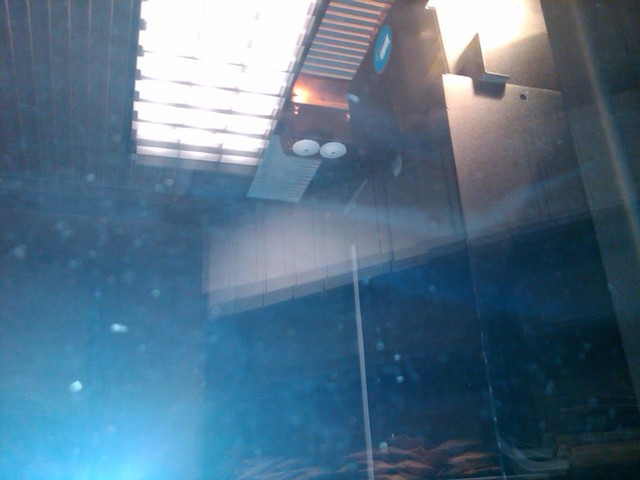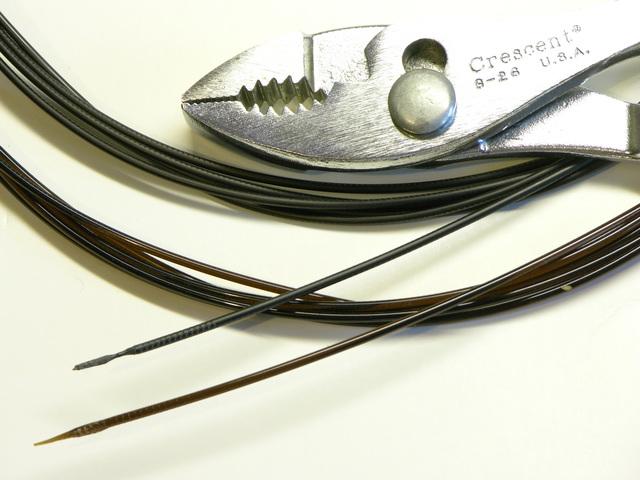Another heretofore unfinished old post, this one from January 2010:
I was over at the aviation department last week and happened upon the installation of a new Stratasys rapid-prototyping machine.
It has a much larger build chamber than NIAR’s previous ABS machine — this one is something like 14″ x 14″ x 18″.
The case was open and I was intrigued by the thick blanket of insulation around the build chamber. I asked the installer if the whole chamber was heated and he said yes, to 80°C. Interesting point of reference, as RepRap / CupCake owners seem to have settled on 60°C as the standard temperature for heated build platforms.
It was fairly dark inside the build chamber and I couldn’t get a great shot with my cell phone camera, but you can see the extrusion head with two nozzles for support and build material. I found it interesting how extremely broad and shallow the white nozzle cones are — maybe it helps prevent snags?
With the lab manager’s blessing, I fished two filament strands out of the trash. The upper, black filament is ABS; the lower, translucent brown filament is a dissolvable support material that apparently washes out in an agitated hot water and detergent bath. Wish I knew exactly what it was!
I measure the diameter at .070″ ± .001″ ≈ 1.778mm ≈ 1.75mm ≈ .069″, so it looks like they’re using 1.75mm filament. The stretched section on the end is recognizable as having been in the hot end and then backed out.
Note the toothmarks all the length of each filament (about 3m), suggesting that either something is pushing the filament from that far back or (more likely) the hot end has a quick-release for cleaning and this filament was run through the machine after removing the hot end.




Hi Keith, not sure if this is what you’re after but these guys in Germany use a dual extruder for PLA and ABS with the PLA as a support. They describe the recipe for a solvent that disolves PLA but leaves ABS untouched:
http://ifeelbeta.de/index.php/support
Hi Keith,
We use a stratasys dimension elite here at work and use a water/caustic soda solution to dissolve the support material.
Our build chamber maintains 75 degrees C.
Cheers,
James
I don’t know if you’re subscribed to this blog:
http://haveblue.org/
From a guy in the RepRap community with a Stratasys machine who experiments, among other things, with finding cheap consumables to use in it.
The toothmarks along the entire length of the filament is almost certainly from the feed rollers inside the material cartridge. These feed rollers drive the filament up to the head, where the main feed rollers (which bite in much more deeply) take over and drive the filament through the liquifier itself.
Have Blue, thanks for the detail on how the Stratasys operates! That’s good to know.
I should correct myself just a little – the backend feed rollers aren’t actually in the cartridge itself on the big T-class machines (looks like a Fortus 400mc, yes?), but are in the cartridge receiver block (for lack of a better term). I understand there’s a little thumbwheel on the cartridge itself to feed the filament into the backend feed rollers.
Thanks for the photos – very cool to see how they insulate the chamber on the big T-class machines!
The reason for the 70C/75C limitation on the Elite/1200 units is due to component thermal cycling concerns due to exposing some of the electronics/motors to the chamber temps. Several of the earlier units had significant lifespan issue that was causing warrantee support issues. The biggest change in the Fortus redesign was to fix the earlier hardware design of component thermal exposure. The extruder design(s) are mostly identical, however.
I realize that the reason for the communities approach on using heated beds is to not step on the chamber patents, but my advice would be to go the other way. Meaning, after placing a layer down, maybe consider having another injector of a cooling agent such as liquid nitrogen. Obviously this would present potential adhering concerns as well as potential condensation concerns, but could also potentially create a near unlimited build envelope which is the biggest problem currently faced with entire FDM approach.